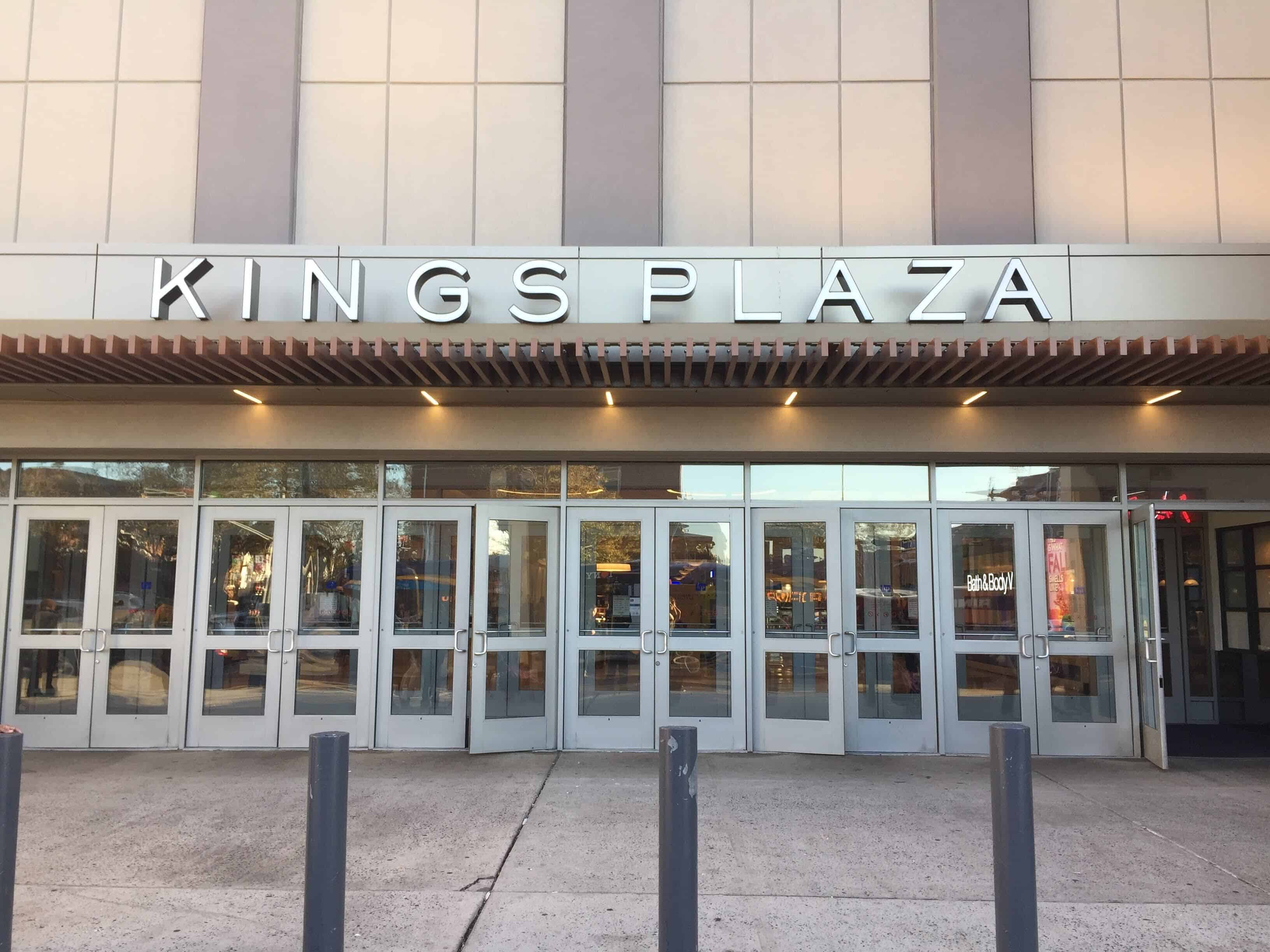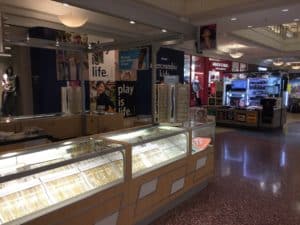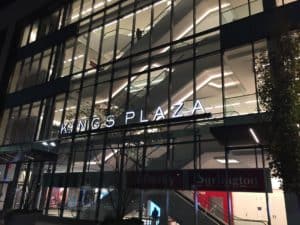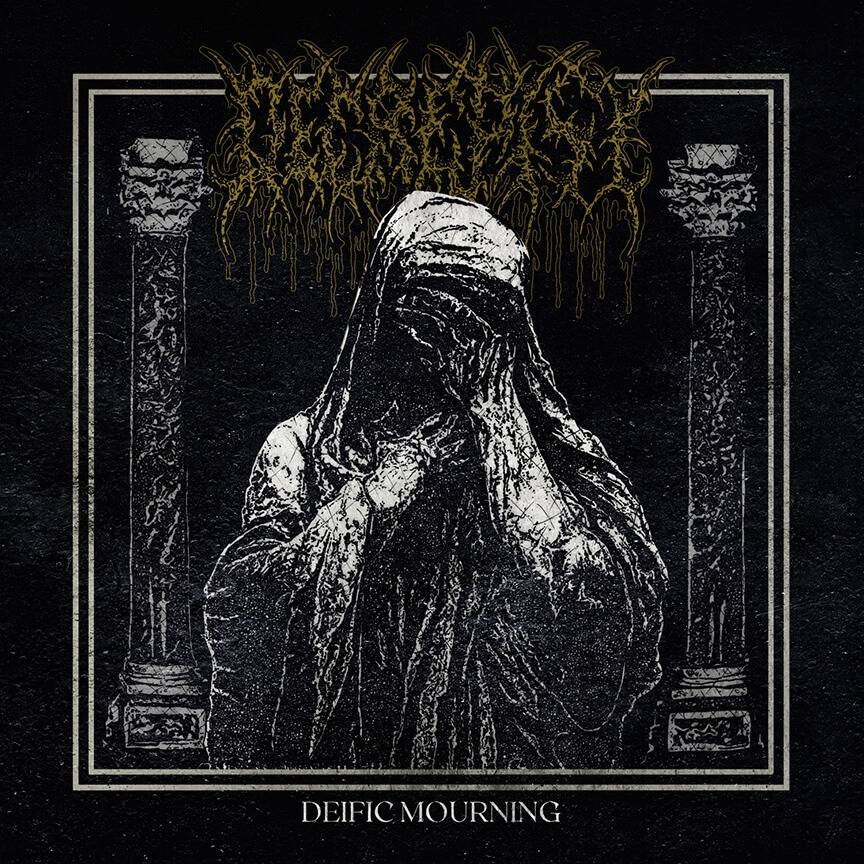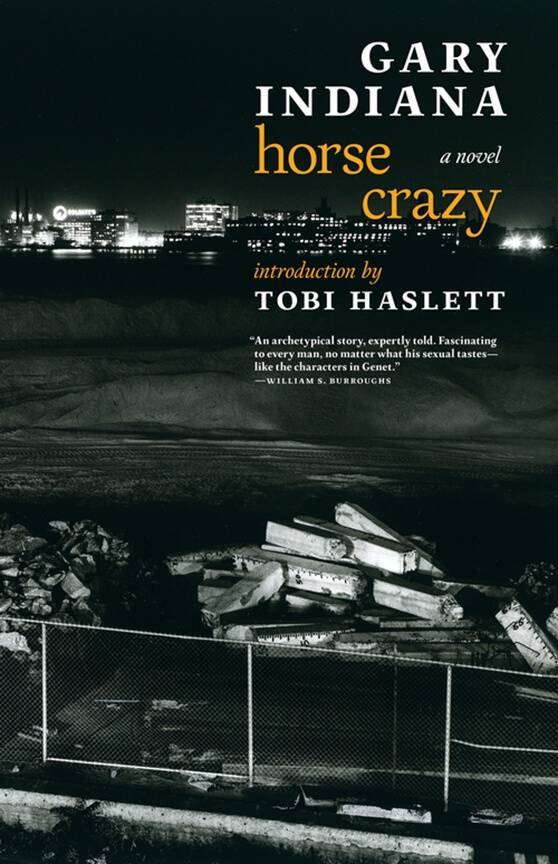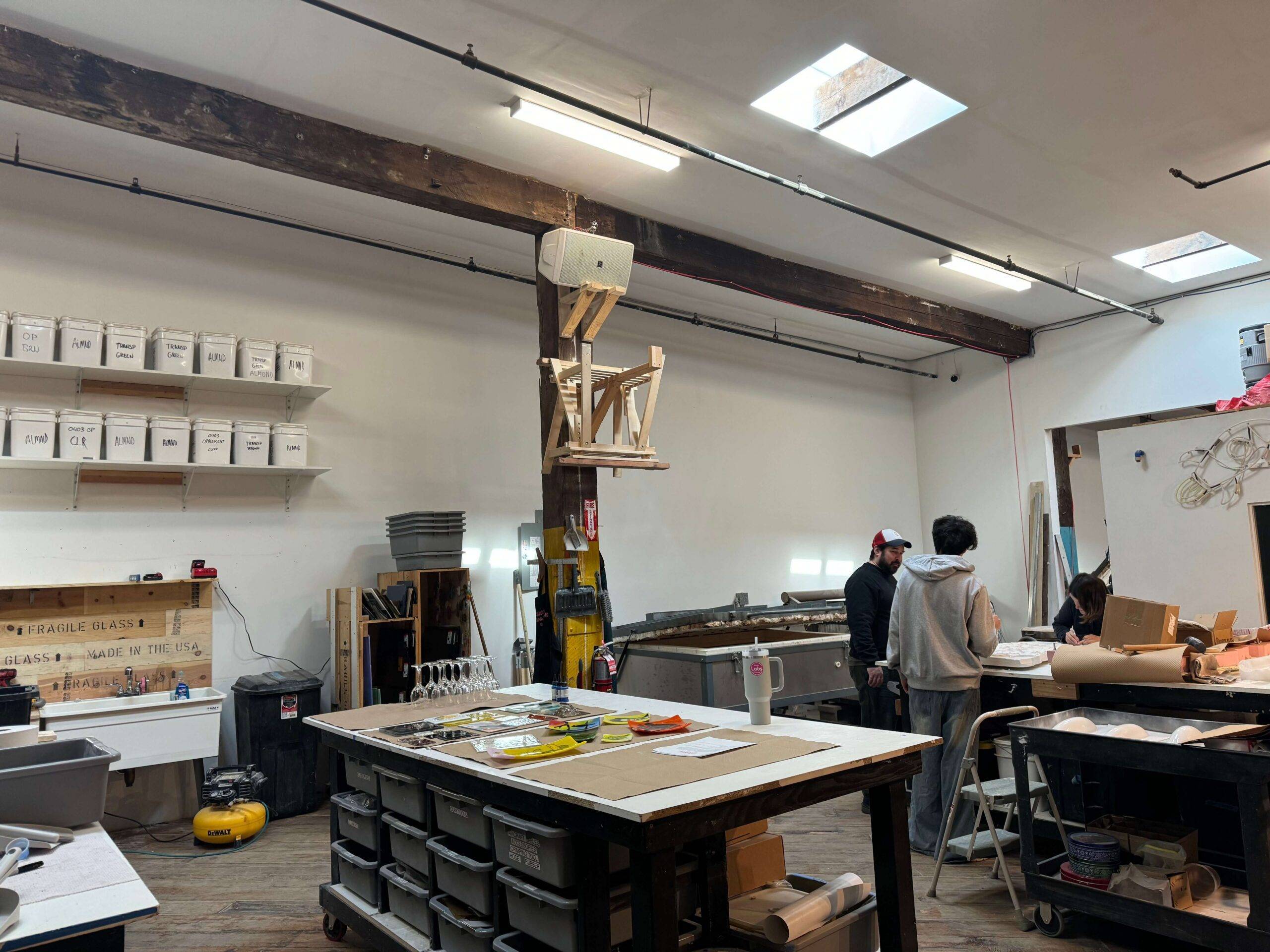On television, the Democratic candidate Andrew Yang has for the past year run a single-issue campaign for president in 2020, centering a promised universal basic income (UBI) of $1,000 a month for every adult in the United States. His website, however, lists about 200 additional policy proposals, the most novel of which may be the American Mall Act, which aims to find new uses for defunct suburban retail space.
The plan pledges public subsidies to spur the transformation of shopping malls into offices, indoor recreation centers, or schools. (In 2014, Highland Mall in Texas became an Austin Community College campus.) Yang explains that, due to the prevalence of e-commerce, 300 malls will likely close in the next four years, leaving behind millions of square feet of blight.
The text of the proposal begins in an elegiac tone, describing an apparently bygone era: “Malls used to be a hub for socialization and commerce in many American communities. They were where families would go shopping for school supplies before grabbing dinner and catching a movie. Teens would have their first jobs working retail there and spend their Friday nights with friends.”
In a way, the Yang campaign’s nostalgia for shopping malls is more striking than any statistic about tough times in the Amazon-dominated retail market. Not long ago, these sleek consumerist temples symbolized America’s disquieting future of sterile corporate capitalism. Built on the outskirts of cities, they hollowed out historic, mixed-use downtowns, replacing them with false town squares – reachable only by car – where teenagers, mistaking them for public space, contended with private security forces whenever they asserted their right to exist without buying something. Main streets shuttered; local cultures died.
Now we have a new dystopia to worry about: robot-powered fulfillment centers, operated by an all-powerful megacorporation that looks to control every single retail transaction in a country where, thanks to online shopping, going outside and interacting with other humans have become optional. To some, shopping malls feel quaint and communal by comparison.
Kings Plaza is the largest indoor mall in Brooklyn. In the suburban sense of term, it’s the only true indoor mall in Brooklyn: while newer multi-level urban retail developments like Atlantic Terminal and City Point situate themselves within the cityscape, Kings Plaza – at Brooklyn’s southeast corner, in low-density Mill Basin – operates as a destination unto itself, with a massive parking garage attached. In other words, it doesn’t complement a traditional pedestrian shopping district; it exists instead of one.
Having not shopped at a mall in years, I visited Kings Plaza to see what one looks like in the year 2019. To my surprise, it looks almost exactly like the shopping malls where I used to hang out as a teenager: eerily so, in fact. It brought back plenty of awful memories as I wandered its incomprehensible geography for a couple hours.
Alongside the notable additions of European fast-fashion retailers Zara and Primark (which, for instance, sells faux-leather chukka boots for the frighteningly low price of $24), the same old clothing stores from 15 years ago – American Eagle, Aeropostale, Express, Hollister Co. – are still blasting pop music and perfume at adolescent shoppers. The salespeople at Foot Locker are still costumed as referees.
Bath & Body Works still sells lotions and candles whose trademark scents bear inscrutable names like “Midnight Blue Citrus,” “Frosted Cranberry,” and “Sweater Weather.” A corner of the mall, carved out by Spencer Gifts and Hot Topic, still belongs to the scenesters and goths, reflecting an “alternative” culture largely frozen in time, commodified as Nirvana, Smashing Pumpkins, and Sublime merchandise.
Auntie Anne’s, Starbucks, and Häagen-Dazs remain so tempting to shoppers in need of a sugar or caffeine fix that each operates two separate stands at Kings Plaza. People are still consuming 1,080-calorie Cinnabons. Rolling Cow’s ice cream spirals seem to have replaced Dippin’ Dots as “the ice cream of the future,” but the idea is the same. There is still a shiny new car sitting in the mall lobby as though it were the stage of The Price Is Right, promising a free chance to win.
How stagnant is our corporatized culture? Nothing much changes. But when a small businessperson decides to rent out a space at the mall, their quirkier, shabbier booth – bereft of any familiar logo – inevitably carries an air of illegitimacy among its bright multinational neighbors. It’s always been that way. Nowadays, the operators of the temporary stalls between permanent storefronts play games on their phones instead of looking forlorn as shoppers pass by.
In the suburbs, malls stand in for all social spaces; they are parks and community centers and destinations not only for shopping but for dining and entertainment. Kings Plaza offers 2,401,524 square feet of retail pleasure, but its AMC movie theater turned into a Best Buy in 2010, and it has no restaurants on the scale of, say, a Cheesecake Factory. Some health-conscious elderly people use the mall’s climate-controlled corridors to get their daily steps in, but the quasi-public spaces aren’t full of plants and fountains like they were at New Jersey’s Freehold Mall or Menlo Park Mall in my youth: in New York City, it seems, a mall can simply be a concentration of stores – it doesn’t have to be the whole world.
Possibly owing to its former life as a cinema, the Best Buy at Kings Plaza has a strange format, where a multitude of discrete showrooms fan out from a central gray box on the mall’s second floor. As a teenager, I regularly bought DVDs at my local Best Buy, and the one here still dedicates a section to Blu-rays, but of late the retailer apparently has begun a process of transforming itself into Sears (a former Kings Plaza tenant), with much of its stock now consisting of washing machines and refrigerators. Appliances may not be as exciting as video games, but I suppose they pay the rent. Kings Plaza’s other anchors – which include JCPenney and Macy’s – are reliable standbys, although the Burlington Coat Factory has changed its name simply to Burlington and seems no more coat-oriented than a TJMaxx.
I entered Kings Plaza thinking that I might at some point feel moved to purchase something, like a new sweater, but I couldn’t find anything suitable. Shopping is a skill, and if you stop doing it, you fall out of practice. I can type the name of a product into the Amazon search bar, but when I survey the array of goods at a brick-and-mortar retailer, I no longer spot items of interest; I only feel dizzy. At the mall, there was just too much stuff, and I gave up fast.
Instead of a sweater, I bought a frozen beverage called a Strawberry Lemonade Frost from Auntie Anne’s (unpleasantly grainy, insufficiently tart – though I maintain that the Auntie Anne’s pretzel dog is one of the better fast food inventions of my lifetime). Then, for lack of anything better to do – and because I knew the virtual reality demonstration station would make me seasick – I fed a dollar into one of those big black chairs placed within the mall like vending machines for an automated three-minute massage, which I’d never tried before.
The notion of a massage at the mall seemed a little silly, but I’d seen a number of other tired shoppers on the machines. Only after I’d sat down on the vibrating seat did I realize that everyone else had simply been using the chairs – presumably against protocol – as regular chairs, without paying. Now that I’d activated the massage feature, it buzzed and jostled me in a remarkably noisy and noticeable way, shaking my entire upper body as I sought fruitlessly to look casual for 180 interminable seconds.
By then, it was hard for me to remember why I’d wanted to spend so much time at the mall as a kid. I think it was because I wasn’t old enough to enter a bar and had nowhere else to go when I didn’t want to be at home. But I wonder whether the majority of teenagers today make the same choice. One might speculate that, for some young people, the internet has replaced traditional shopping not only as a means to procure goods but as a source of entertainment. We used to wander around malls for fun – to look at things. Now there’s plenty to look at on Instagram. If there’s less reason now to enter the real world for life’s necessities, there’s also less reason to do so for amusement.
But amid my own relative gloom, I could tell that other shoppers at Kings Plaza were enjoying successful retail excursions, to which their handfuls of bags attested. I talked to a few of them, and they all turned out to be Kings Plaza regulars. One man said that he comes once a week, another two to three times a month. They both mentioned that they prefer brick-and-mortar clothing stores over e-retailers because they like to see how the garments fit before buying them – it’s such a hassle to mail back returns. An Old Navy employee on break told me that she likes working at Kings Plaza, which has seen “a lot of new stores” open lately. But it gets “very crazy during the holidays.”
Even on a Monday evening, the mall seemed fairly busy to me. I had arrived expecting to find rows of empty storefronts, but I spotted hardly any (although Forever 21, which filed for bankruptcy in September, will likely close its two-level shop by the end of the year). Outside, frequent B46 buses disgorged passengers. In the hallways, kids played on electronic rides, and security chased off unruly teens.
On the outer edge of Brooklyn, Kings Plaza is still a more convenient destination for more people than any mall in the exurbs, and that may keep it in business after Middle Americans have decided that it’s not worth it to drive 30 miles for shopping. In any case, not everyone has yet acceded to the yuppies’ internet-only vision of delivered groceries and subscription underwear, and perhaps it’s unlikely that everyone ever will. I’m not sure the mall is any better, but for now, it’s the devil we know, and a world without stores is the devil we don’t.

